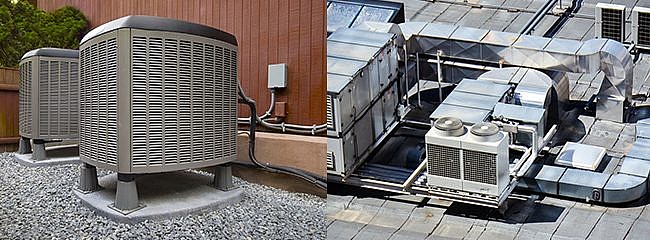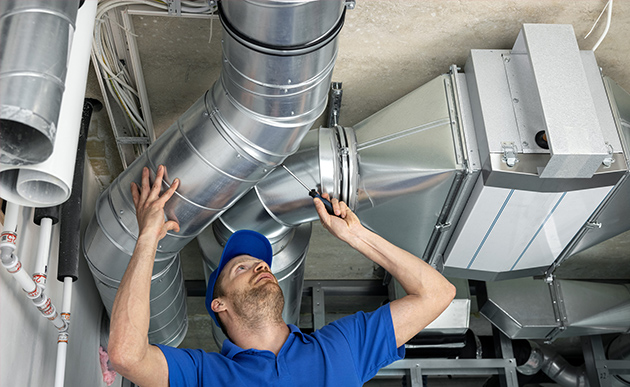
Air Conditioning and HVAC Systems For Your Home – Everything You Need to Know
Pretty much all modern buildings have integrated HVAC systems, or heating, ventilation, and air conditioning. HVAC systems are critical to circulate air around a building, keeping indoor temperatures manageable for comfort, and overall operating as the ‘lungs’ of a built environment. Without proper HVAC, germs would stagnate in the air and get people sick. Comfortable temperatures and humidity are critical to happiness, productivity, and even long-term health.
Despite the importance of HVAC systems, many homeowners don’t focus on how the systems work or why they’re so important. For example, having air conditioning alone might not be enough because it just cools the air in a building. A full HVAC system, on the other hand, incorporates heat pumps, furnaces, and venting systems to move warm or cool (but always clean) air where it’s needed.
Here are some essential things you should know about air conditioning and HVAC systems in your homes.
Air Conditioning and HVAC Maintenance
Air conditioning and HVAC systems are critical to any building. However, builders and homeowners might overlook their regular maintenance, resulting in some problems creeping in over time. These include:
- Systems leaking refrigerant
- Systems turn on but won’t circulate air, or conversely, the blower runs continuously
- Loud noises, which are signs of something broken or worn out
- Evaporator coil frozen
- Any type of electrical failure, including controls or sensor failure
- Drainage issues inside or outside the building
- Dirty and unmaintained filters
These issues are regular symptoms that HVAC owners face, but the solutions vary based on the circumstances. Given how costly the systems can be to repair and the inconvenience of a down system, regular repair and maintenance is required. Building owners should keep the following indicators in mind:
- Annual inspection by a trained HVAC system analyst is the minimum frequency that should be maintained
- Any time the system is behaving in unexpected ways, getting a trained professional on-site as soon as possible is critical to controlling the damage
- If you notice any leaked fluid in areas you don’t usually see, that can be a sign that maintenance is needed
- If your energy use is going up rapidly compared with what you would expect in a given time of year, malfunction may be the issue
Generally speaking, HVAC systems can be expected to need full replacement every 10 to 15 years.
Installing Energy Efficient and Sustainable Home HVAC Systems

Most buildings see a majority of their energy use go towards running these systems. This means that HVAC systems that are running sub-optimally will lead to more expensive utility bills in the long run. It may be more costly initially to install an HVAC system or air conditioner with a higher energy efficiency rating. But over time the reliability and cost savings of a more efficient system will save money and end up paying back the difference in investment.
For residential HVAC systems, numerous steps go into the design of a sustainable and energy-efficient HVAC system:
- Design HVAC design plays a key role in determining the longevity of your systems. Integrating design elements that eliminate the need for HVAC to be at full blast is one way to set up an efficient system. Another method is to centrally locate key systems so the HVAC doesn’t have to work as hard to move air around.
- General Maintenance Maintenance of HVAC systems includes regularly replacing air filters, having a professional inspect ducts and pipes for damages, and identifying any leaks of air or fluids. This type of maintenance can be done on an annual basis, or more often for more complex systems. The earlier issues are identified, the earlier the resultant energy waste can be eliminated.
- Efficiency Settings Once the HVAC system is installed, it’s up to the building occupants to ensure the settings of the system are maintained in an efficient, non-wasteful manner. That means adjusting temperature settings depending on the season, and reducing HVAC requirements when the building is unoccupied to ensure comfort and health without unnecessarily expelling energy.
- Upgrade Your System Lastly, the HVAC technology regularly sees improvements from smart technology to improved materials and more. When it becomes appropriate to do so, replace the HVAC system in your building or homes to provide an immediate boost to the overall sustainability of your building’s operations.
Conclusion
HVAC and air conditioning systems are essential for ensuring that those inside the building or home remain safe, healthy, and comfortable. With this comes some responsibilities for the building or homeowner, notably in utilizing energy-efficient technology and integrating sustainable design principles where possible. Overusing the HVAC system or not properly maintaining the air conditioner will lead to wasted energy, which is bad for the utility bill and the environment. If you’re considering where opportunities for energy savings exist when building a new HVAC system or exploring improvements in an existing one, reach out to IndiaCADworks today. Our design experts follow energy efficiency practices to deliver CAD designs for building sustainable HVAC systems.
– IndiaCADworks












